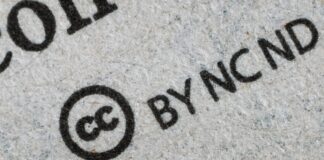Quarkus is an innovative, open-source Java framework that has gained significant popularity in recent years, primarily because of its ability to provide an optimal runtime for Java applications. By leveraging GraalVM’s native image capabilities and adopting a “supersonic, subatomic” approach, Quarkus aims to address the traditional challenges faced by Java developers in the realm of microservices, serverless, and cloud-native architectures. It achieves this by offering a combination of lightweight, fast, and efficient characteristics while still retaining Java’s robustness and ecosystem.
Now, let’s delve into the ten important aspects of Quarkus that make it stand out as a game-changing technology:
1. Supersonic Startup Times: Quarkus excels in lightning-fast startup times, significantly reducing the time it takes for your Java applications to begin running. This speed improvement is due to its optimization with GraalVM native images, allowing for swift deployment and scaling in containerized environments.
2. Low Memory Footprint: One of Quarkus’ notable features is its small memory footprint. By minimizing the number of dependencies and adopting an efficient runtime, Quarkus consumes considerably less memory compared to traditional Java frameworks, making it suitable for resource-constrained environments and microservices architecture.
3. Efficient Developer Experience: Quarkus offers a streamlined developer experience with its comprehensive set of extensions. These extensions provide ready-to-use functionality for various technologies, libraries, and APIs, allowing developers to build applications rapidly without the need to manually configure or integrate each component.
4. Native Compilation: With its support for native compilation via GraalVM, Quarkus enables the creation of self-contained, standalone executables that eliminate the need for a Java Virtual Machine (JVM) during runtime. This feature results in even faster startup times and reduces the overall resource consumption.
5. MicroProfile and Jakarta EE Compatible: Quarkus is built to be fully compatible with MicroProfile and Jakarta EE, ensuring seamless migration and integration with existing Java Enterprise Edition projects. This compatibility allows developers to leverage their previous investments while embracing the advantages of Quarkus.
6. Reactive Programming: Quarkus embraces reactive programming paradigms, making it ideal for developing responsive and scalable applications. It integrates with Reactive Streams, enabling non-blocking I/O and providing support for reactive data streams.
7. Extension Ecosystem: Quarkus boasts a vibrant and growing extension ecosystem. Developers can choose from a wide range of community-contributed extensions that cover various technologies, databases, messaging systems, security mechanisms, and more, simplifying the integration of these services into their applications.
8. Live Coding and Hot Reload: Quarkus facilitates rapid development cycles with its live coding and hot reload capabilities. Changes made to the code are instantly reflected without requiring a full application restart, reducing development turnaround times and increasing productivity.
9. DevSecOps-Friendly: Quarkus aligns well with modern DevSecOps practices by promoting a container-native deployment approach. Its lightweight nature and support for cloud-native technologies like Kubernetes and OpenShift make it an excellent fit for continuous integration and continuous delivery (CI/CD) pipelines.
10. Community and Enterprise Support: Quarkus boasts an active and passionate community, contributing to its rapid evolution and continuous improvement. Additionally, enterprises can rely on Red Hat’s support and expertise as Quarkus is backed by Red Hat, providing long-term stability and enterprise-level support.
Quarkus is a groundbreaking Java framework that redefines the way we build and deploy Java applications. Its unique combination of speed, efficiency, and developer-friendly features empowers developers to create high-performance, cloud-native applications with ease. Whether you’re developing microservices, serverless functions, or cloud-native applications, Quarkus is a compelling choice that leverages Java’s strength while breaking away from its historical limitations.
Quarkus is an innovative, open-source Java framework that has gained significant popularity in recent years, primarily because of its ability to provide an optimal runtime for Java applications. By leveraging GraalVM’s native image capabilities and adopting a “supersonic, subatomic” approach, Quarkus aims to address the traditional challenges faced by Java developers in the realm of microservices, serverless, and cloud-native architectures. It achieves this by offering a combination of lightweight, fast, and efficient characteristics while still retaining Java’s robustness and ecosystem.
One of the most notable features of Quarkus is its ability to deliver supersonic startup times. By significantly reducing the time it takes for your Java applications to begin running, Quarkus enhances the overall user experience and ensures that applications can scale rapidly and efficiently. This speed improvement is made possible by its tight integration with GraalVM native images, allowing for swift deployment and scaling in containerized environments.
In addition to fast startup times, Quarkus stands out with its remarkably low memory footprint. By carefully selecting and minimizing the number of dependencies, the framework consumes considerably less memory compared to traditional Java frameworks. This aspect makes Quarkus ideal for resource-constrained environments and well-suited for microservices architecture, where efficient resource usage is crucial.
Quarkus also excels in providing an efficient developer experience. It achieves this by offering a comprehensive set of extensions, which serve as ready-to-use building blocks for various technologies, libraries, and APIs. Developers can easily integrate these extensions into their projects without the need for manual configuration, enabling them to build applications rapidly and efficiently.
Another crucial aspect of Quarkus is its support for native compilation through GraalVM. This feature allows developers to create self-contained, standalone executables that eliminate the need for a Java Virtual Machine (JVM) during runtime. As a result, applications built with Quarkus boast even faster startup times and reduced overall resource consumption, further enhancing their efficiency.
Furthermore, Quarkus ensures compatibility with existing Java Enterprise Edition (EE) projects by being fully MicroProfile and Jakarta EE compatible. This compatibility allows developers to leverage their previous investments and seamlessly integrate existing components into Quarkus applications, making the migration process smoother and less disruptive.
The framework’s embrace of reactive programming is another compelling feature. Quarkus integrates with Reactive Streams, enabling non-blocking I/O and supporting reactive data streams. This makes it an excellent choice for developing responsive and scalable applications that can handle high concurrency and efficiently utilize system resources.
Quarkus boasts a vibrant and growing extension ecosystem contributed by its active community. With a wide range of extensions covering various technologies, databases, messaging systems, security mechanisms, and more, developers have access to a diverse array of tools that simplify the integration of external services into their Quarkus applications.
In terms of development convenience, Quarkus offers live coding and hot reload capabilities. This means that developers can make changes to the code and instantly see the results without requiring a full application restart. This feature significantly reduces development turnaround times, leading to increased productivity and a more enjoyable development experience.
Additionally, Quarkus aligns well with modern DevSecOps practices, making it a developer-friendly and enterprise-ready solution. Its container-native deployment approach, lightweight nature, and support for cloud-native technologies like Kubernetes and OpenShift enable seamless integration into continuous integration and continuous delivery (CI/CD) pipelines, further enhancing the development and deployment workflow.
Lastly, Quarkus benefits from a strong community and enterprise support. The passionate developer community contributes to its rapid evolution and continuous improvement, ensuring that the framework stays up-to-date with the latest technologies and best practices. Moreover, enterprises can rely on Red Hat’s support and expertise, as Quarkus is backed by Red Hat, providing long-term stability and enterprise-level support for mission-critical applications.
Quarkus is a groundbreaking Java framework that redefines the way we build and deploy Java applications. Its unique combination of speed, efficiency, and developer-friendly features empowers developers to create high-performance, cloud-native applications with ease. Whether you’re developing microservices, serverless functions, or cloud-native applications, Quarkus is a compelling choice that leverages Java’s strength while breaking away from its historical limitations. With its focus on fast startup times, low memory footprint, and extensive extension ecosystem, Quarkus has solidified its position as a leading technology for modern Java development.
Furthermore, Quarkus’s extensibility and flexibility make it an ideal choice for various use cases and application scenarios. Its ability to seamlessly integrate with popular development frameworks, libraries, and tools allows developers to leverage their existing knowledge and skills, while also adopting the latest innovations in the Java ecosystem.
As organizations increasingly adopt cloud-native and microservices architectures, Quarkus becomes a pivotal technology for modernizing legacy applications and building new, scalable solutions. Its low resource consumption and fast startup times enable efficient containerization and dynamic scaling, making it well-suited for cloud deployments and serverless environments.
Quarkus is particularly well-suited for resource-constrained environments, such as Internet of Things (IoT) devices and edge computing. Its small memory footprint and reduced processing requirements enable Java applications to run smoothly on edge devices, ensuring efficient utilization of limited resources while maintaining the flexibility and power of Java development.
The reactive programming capabilities in Quarkus enable the creation of responsive and event-driven applications, facilitating real-time data processing and ensuring smooth interactions with users and external services. This is especially valuable in applications with high levels of concurrency or data streaming requirements, such as real-time analytics and Internet of Things (IoT) solutions.
In the rapidly evolving landscape of modern software development, Quarkus’s native compilation feature positions it as a strong candidate for serverless computing platforms. The ability to create GraalVM native images allows Java developers to build lightweight, function-as-a-service applications that execute faster, consume fewer resources, and reduce cold start times—a crucial requirement in serverless environments.
The live coding and hot reload capabilities in Quarkus significantly enhance developer productivity and shorten development cycles. Developers can experiment, iterate, and debug their applications with real-time feedback, eliminating the need for frequent restarts and context switches. This iterative development approach speeds up the overall development process and encourages a more agile and responsive software development lifecycle.
As Quarkus continues to mature, its community-driven development approach ensures a steady stream of updates, bug fixes, and new features. The open-source nature of the framework fosters collaboration and knowledge-sharing among developers, leading to a more vibrant and innovative ecosystem.
Quarkus’s strong emphasis on developer experience extends beyond its extension ecosystem. The framework provides comprehensive tooling support for popular Integrated Development Environments (IDEs) like Eclipse, Visual Studio Code, and IntelliJ IDEA. This seamless integration with the developer’s preferred tools ensures a familiar and efficient development workflow.
Moreover, Quarkus is well-positioned to integrate with modern cloud-native technologies and services. Its support for various container runtimes, cloud providers, and Kubernetes platforms enables developers to deploy and manage Quarkus applications in a wide range of cloud environments with ease.
In summary, Quarkus offers a compelling solution for modern Java development, combining the strengths of Java’s robustness and ecosystem with the demands of cloud-native, microservices-based architectures. Its supersonic startup times, low memory footprint, and support for native compilation are some of the standout features that set it apart from traditional Java frameworks. With a strong community, extensive extension ecosystem, and compatibility with MicroProfile and Jakarta EE, Quarkus continues to gain traction as a top choice for building high-performance, cloud-native applications in the Java ecosystem. As the technology landscape continues to evolve, Quarkus’s ongoing development and innovation will undoubtedly keep it at the forefront of modern software development for years to come.














